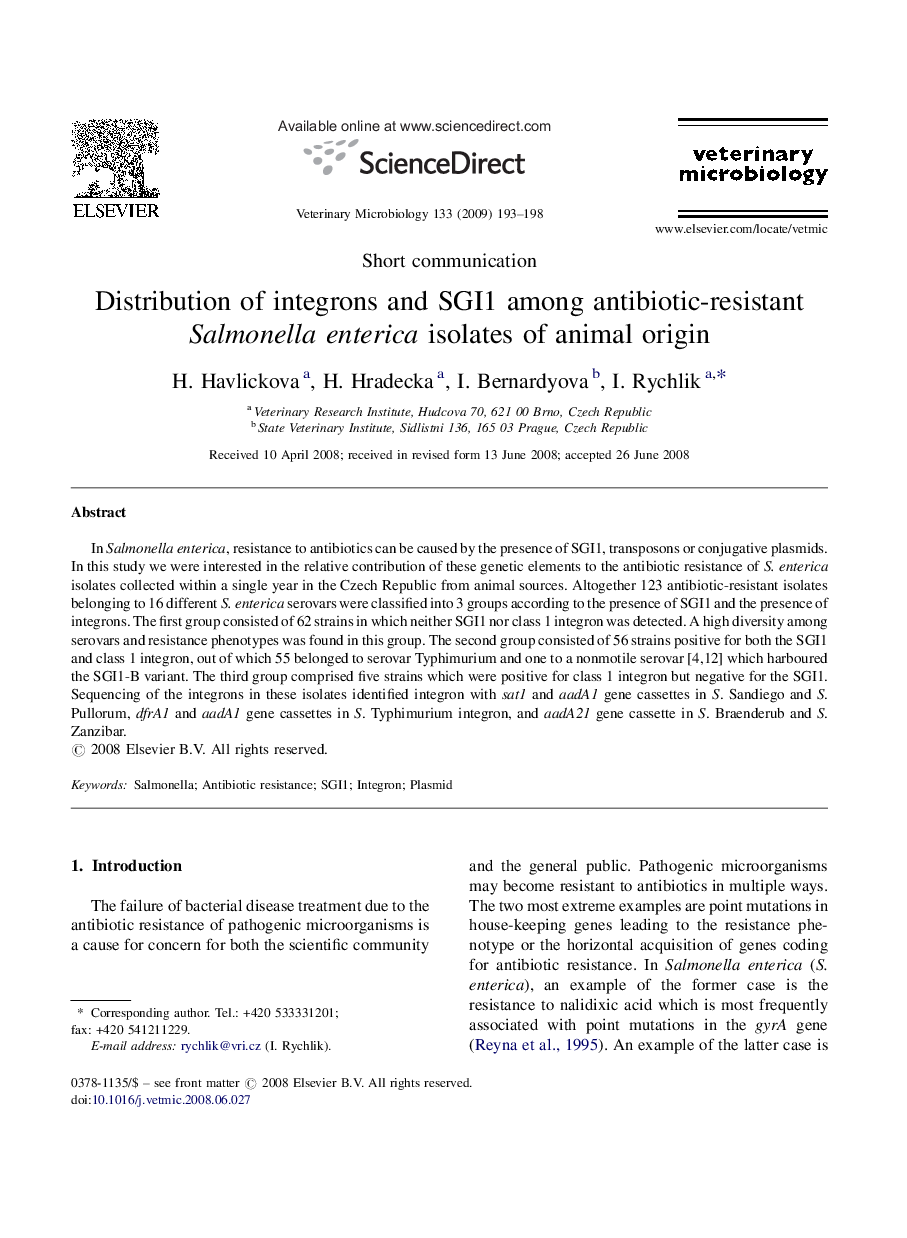| Article ID | Journal | Published Year | Pages | File Type |
|---|---|---|---|---|
| 2468437 | Veterinary Microbiology | 2009 | 6 Pages |
In Salmonella enterica, resistance to antibiotics can be caused by the presence of SGI1, transposons or conjugative plasmids. In this study we were interested in the relative contribution of these genetic elements to the antibiotic resistance of S. enterica isolates collected within a single year in the Czech Republic from animal sources. Altogether 123 antibiotic-resistant isolates belonging to 16 different S. enterica serovars were classified into 3 groups according to the presence of SGI1 and the presence of integrons. The first group consisted of 62 strains in which neither SGI1 nor class 1 integron was detected. A high diversity among serovars and resistance phenotypes was found in this group. The second group consisted of 56 strains positive for both the SGI1 and class 1 integron, out of which 55 belonged to serovar Typhimurium and one to a nonmotile serovar [4,12] which harboured the SGI1-B variant. The third group comprised five strains which were positive for class 1 integron but negative for the SGI1. Sequencing of the integrons in these isolates identified integron with sat1 and aadA1 gene cassettes in S. Sandiego and S. Pullorum, dfrA1 and aadA1 gene cassettes in S. Typhimurium integron, and aadA21 gene cassette in S. Braenderub and S. Zanzibar.
